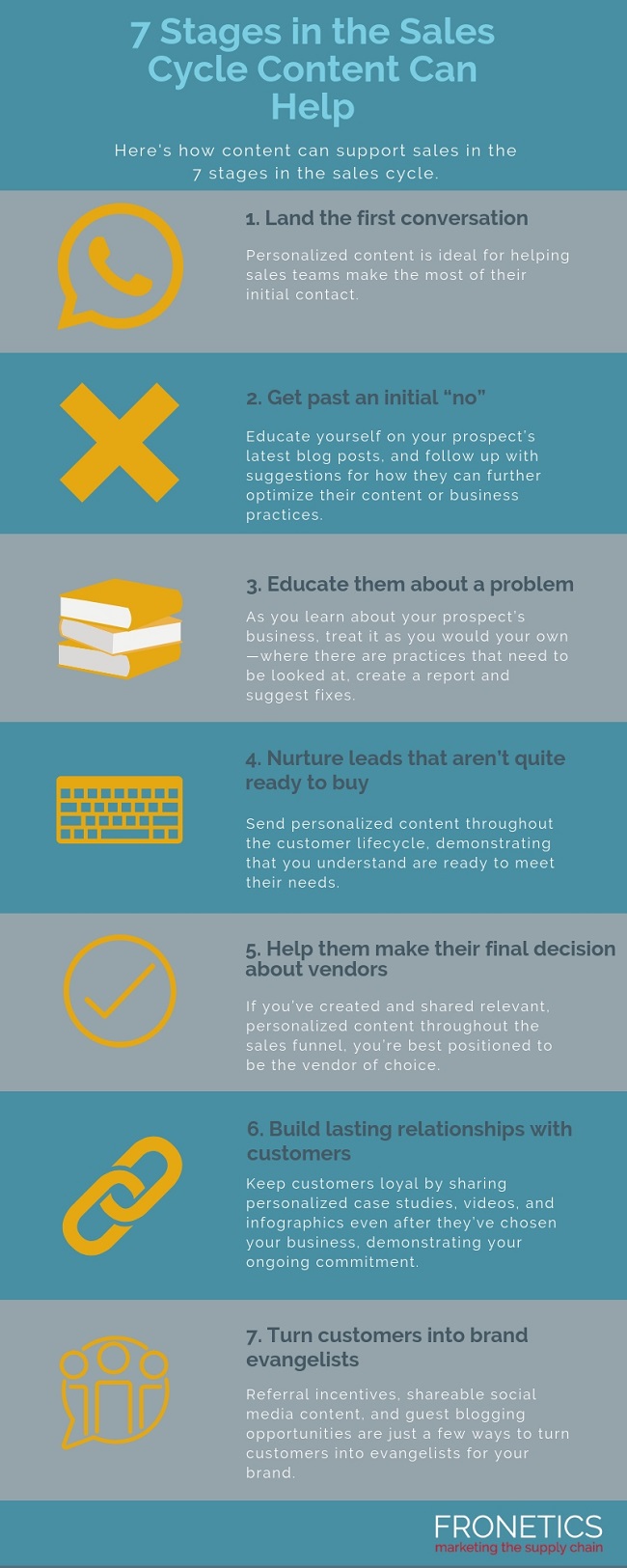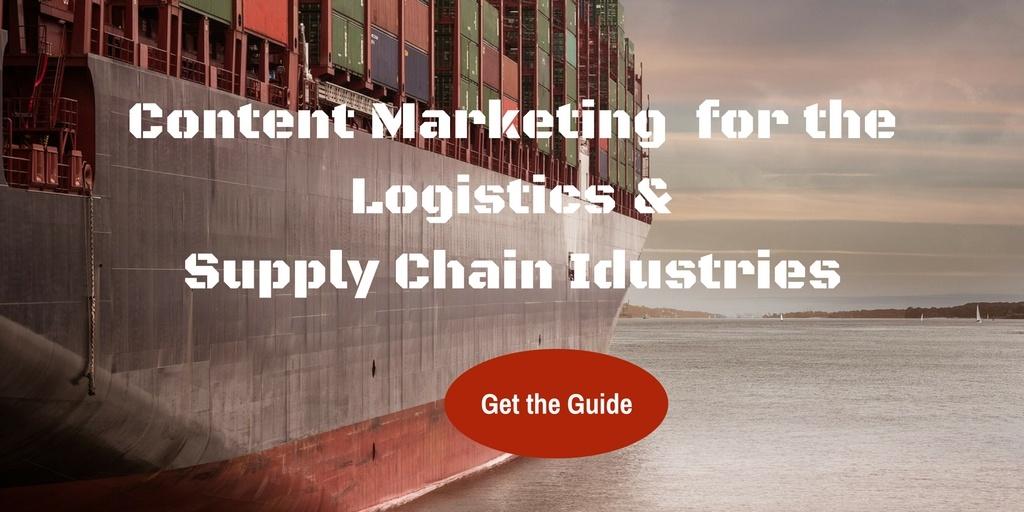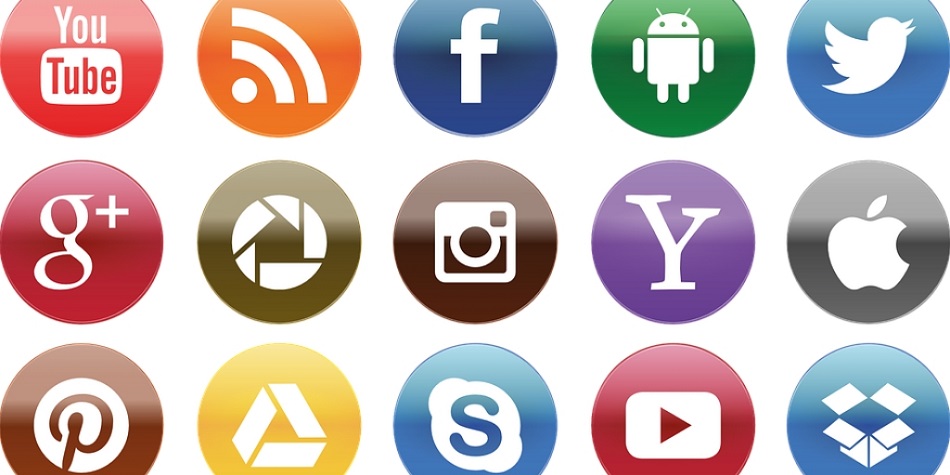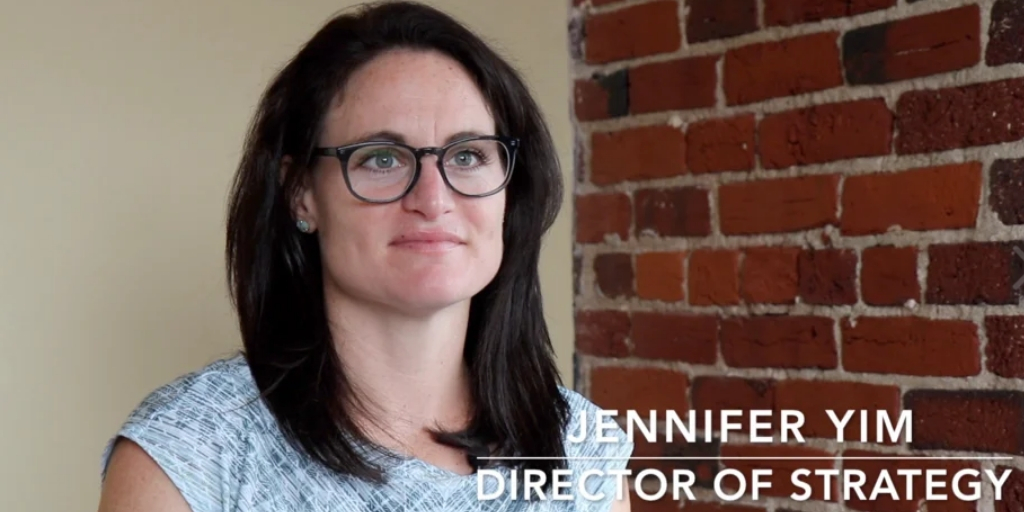
by Fronetics | Nov 7, 2018 | Blog, Content Marketing, Logistics, Marketing, Social Media, Strategy, Supply Chain
Companies can reach millennial B2B buyers by partnering with popular social media users who speak with passion and expertise to young professionals.
Numbering 80 million, millennials have become the largest demographic segment in the United States and are expected to command more than $1 trillion in disposable income by the year 2020. As this generation comprises an increasing percentage of the B2B buying landscape, businesses must pay attention to their professional purchasing habits — which, it turns out, bleed over from their personal purchasing patterns.
Millennials are notoriously hard to reach through traditional marketing strategies. But successfully appealing to that demographic is becoming more and more important. Jay I. Sinha and Thomas T. Fung, marketing specialists at Temple University, explain how B2B companies can use “nano-marketing” techniques to generate buzz and build credibility with millennials.
Micro-influencers
Large companies have traditionally used celebrities and recognizable logos to promote their brands. But millennials have turned away from advertising and endorsements that aren’t perceived as authentic or based on expert knowledge.
Millennials have led a surge in the popularity of social media platforms, and companies have found increasing success in using sites like Instagram, Snapchat, Pinterest, and YouTube to market to this demographic.
[bctt tweet=”“Micro-influencers,” or social media users whose followers number between 1,000 and 100,000, have proven four times more likely to generate viewer engagement over the products they review than celebrity endorsements.” username=”Fronetics”]
“Micro-influencers,” or social media users whose followers number between 1,000 and 100,000, have proven four times more likely to generate viewer engagement over the products they review than celebrity endorsements. Partnering with micro-influencers is a highly affordable way for companies to make their brands visible and relatable.
Micro-influencers have helped turn start-ups into major brand-names and have helped established companies extend their influence into youthful markets, leading Inc. magazine to declare 2018 the “Year of the Micro-Influencer.”
Strategies for B2B companies
Sinha and Fung argue that this strategy is not just for B2C companies selling products known to appeal to millennial consumers. What’s known as nano-marketing, or partnership with micro-influencers, can be just as effective for B2B.
Sinha and Fung offer four managerial guidelines for B2B companies seeking to partner with micro-influencers.
1. Micro-influencers have specialized and self-selecting audiences.
Picking the right micro-influencer to partner with can help you target the sub-groups you want to reach. For instance, GE uses nano-marketing to help recruit female tech professionals.
2. Recognize the strengths of micro-influencers.
They make products and companies seem relatable to viewers by sharing their personal experiences. Companies can leverage this in their branding.
3. Nano-marketing works best as “a subtle nudge.”
Whereas traditional advertising has to be heavy-handed to be memorable, micro-influencers speak with credibility about brands that they personally have used.
4. Entertainment.
Micro-influencers find innovative ways of producing content that will appeal to their followers and incorporate their brand endorsement in creative formats.
Millennial B2B buyers should be an increasing focus of your targeted marketing activities — if they’re not already. How are you reaching this audience?
Related posts:


by Fronetics | Nov 6, 2018 | Blog, Content Marketing, Logistics, Marketing, Strategy, Supply Chain
Here’s how content can help support sales during the seven stages of the sales cycle, including personalization and building last relationships.
The sales process is often a complicated journey that includes uphill climbs and unexpected roadblocks. Sales teams are all too familiar with these obstacles, but they don’t have to fight these battles alone.
Arm a sales rep with targeted content to share with prospects during specific moments in the purchasing process, and it will build his or her reputation as a knowledgeable resource. That can be the key to getting a foot in the door, advancing through the final stages of a purchasers’ decision, or closing the deal.
Strong communication between sales and marketing can help achieve big-picture goals when it comes to creating content, including:
- mutual understanding of the buyer’s journey
- updated prospect insights that can affect future marketing content
- brainstorming content solutions to bottlenecks in the sales funnel
Let content support the sales cycle by demonstrating the business value of your product or solution.
Here are examples of how content can assist your sales team throughout the seven stages of the sales process, even when the sales journey goes off course.
Infographic: 7 Stages in the Sales Cycle Content Can Help

(Made with Canva)
Takeaway
According to DemandGen’s survey, 75% of buyers said that content had a significant impact on which vendor they chose. And that’s not all, 89% of respondents stated they selected brands that provided content that made it easier to demonstrate ROI and/or build a business case for their purchase.
These numbers highlight how important it is for sales teams to be armed with informative, relevant content to support the sales cycle. It’s not enough to just produce content, sale teams need to be ready to provide this content to potential customers at every point of contact.
Want help identifying what content your supply chain and logistics company can provide to your sales team? Let us help.
Related posts:


by Fronetics | Nov 5, 2018 | Blog, Content Marketing, Logistics, Marketing, Supply Chain
Case studies continue to be the preferred content type among B2B buyers. These 5 elements will help you write case studies that engage prospects and generate leads.
We just wrote about how buyers prefer case studies over all other kinds of content. In fact, 89% of B2B marketers consider customer testimonials and case studies as the most effective kinds of content in converting buyers. So how do you write an effective case study that generates leads?
Here are 5 elements of an effective B2B case study:
1) Story
Yes, case studies are all about the data, but fundamentally, they are stories. You’re not making a sales pitch — case studies written from this perspective tend to fall flat, and fail to attract and engage prospective buyers. Case studies written as stories succeed. You’re presenting a narrative to a prospect that uses data and testimonials to explain how your products and services helped another business.
[bctt tweet=” Case studies written as stories succeed. You’re presenting a narrative to a prospect that uses data and testimonials to explain how your products and services helped another business.” username=”Fronetics”]
2) Information and Education
Again, a case study is not a sales pitch. When you write a case study, you’re presenting information about your products and services, and educating your prospects about how your business has helped organizations similar to their own.
3) Concrete Examples
One of the reasons case studies are such a high-performing content type is that they are data-driven. Prospective buyers turn to case studies for concrete examples. Make it easy for them to find the information they’re looking for. Use bullet points, quotes, and lists to clearly convey the most important data.
4) The Right Length
Finding the right length for your case study is all about striking a balance between presenting complete information, telling a compelling story, and avoiding minutia that’s too specific to matter to your prospects. Your reader needs to be able to skim quickly to get the gist, and then dive back in for more details.
Think about it this way: if you’re the prospect, does your case study leave you with questions about how your products and services helped another business? If so, chances are you haven’t included enough information.
5) The three key components
- The Challenge: This is chapter one of your story. What challenge or challenges was your customer facing before implementing your products? This is a great place to use customer quotes.
- The Solution: Here’s the meat of the story! How did your business address the challenges your customer was facing? Data is key here.
- The Results: Your story’s conclusion. Use key metrics to demonstrate the immediate and ongoing results of your solution. Numbers like savings, revenue gains, sales growth, and ROI belong in this section, rounded off with another customer quote.
Related posts:


by Fronetics | Nov 1, 2018 | Blog, Content Marketing, Logistics, Manufacturing & Distribution, Marketing, Supply Chain
Case studies are a perfect way to organize and present hard facts about your products and services — and they continue to be one of the most effective types of content out there.
A recent study shows that case studies far outperform other types of content. The DemandGen 2017 Content Preferences Survey Report found that 78% of B2B buyers used vendor case studies as part of their purchasing decisions in the past 12 months. 89% of B2B marketers consider customer testimonials and case studies to be the most effective kind of content to convert buyers.
Buyers are looking to “benchmark their own experiences against others who’ve tackled similar challenges,” concluded DemandGen’s report. Data is powerful stuff, and buyers know it. In fact, DemandGen’s survey indicated 48% of buyers not only prefer case studies but find them to be the most valuable type of content for research. 57% even said that they would register and share information in exchange for case studies.
Why the case study?
Beyond the obvious answer that data is important to buyers, why do they respond so well to this type of content? According to Frank Cespedes, Senior Lecturer at Harvard Business School and author of Aligning Strategy and Sales, ultimately, buyers are less interested in theory than practice: “Buyers, especially B2B buyers, want to know what others are doing with your product, not what they might do to improve productivity or other outcomes.”
[bctt tweet=”Yes, case studies are highly effective, but their success is predicated on your reputation as a thought leader and source of knowledge and expertise.” username=”Fronetics”]
As a side-note, before you jump ship on aspects of your content marketing strategy, like blogs, social media, webinars, etc., that focus on sharing ideas rather than just data, consider this: even the most impactful case study is only as useful as the totality of your brand’s content. In other words, yes, case studies are highly effective, but their success is predicated on your reputation as a thought leader and source of knowledge and expertise.
What makes a case study effective?
Not all case studies are created equal. Data presented in a confusing or incomplete way, for example, doesn’t pack the kind of punch needed to demonstrate exactly how your products and services help your buyers. A good case study should prompt the reader to explore your brand and the rest of your content. Ultimately, the goal is to show your prospect that making a change in their process will lead to better results.
As you design a case study, think about giving buyers the tools to present your products and services to decision-makers within their business. “Especially in B2B contexts,” says Cespedes, “buyers must justify a decision to others in the organization who have competing priorities for limited funds.” This is where a compelling case study comes in. Show your potential buyers how other organizations benefit from your offerings, and they have the tools to make a case for your business.
Case studies are proven to be well worth the time and energy needed to produce them. Recommendations and data from real customers have a powerful impact and should continue to be a significant component of your overall content marketing strategy.
Related posts:


by Fronetics | Oct 31, 2018 | Blog, Content Marketing, Current Events, Marketing, Social Media
Also in social media news, October 2018: Snapchat partners with Amazon on visual search tool, Google Plus is shutting down, and Instagram adds Quick Replies for business accounts.
With the arrival of Halloween, we know that the holidays are quickly approaching. Consumers will be busy making plans and diving into holiday specials. But social networks will also be hard at work trying to stand out against brick and mortar stores as an alternative for holiday preparations.
[bctt tweet=”Businesses looking to gain traction during the holiday season will reap the benefits of social networks, which are including new features and updates that will help brands connect with new (and existing) users.” username=”Fronetics”]
Businesses looking to gain traction during the holiday season will reap the benefits of social networks, which are including new features and updates that will help brands connect with new (and existing) users. With a heavy focus on customer engagement, these new options help businesses stay connected with new features like Quick Replies on Instagram. These small but helpful updates will allow companies to have a greater reach without extra work for their marketers.
Here’s your social media news for October 2018.
Instagram founders leave Facebook
Kevin Systrom, CEO, and Mike Krieger, CTO, resigned from Instagram this week amidst rumors of tension with Facebook founder and CEO, Mark Zuckerberg. “We’re planning on leaving Instagram to explore our curiosity and creativity again. Building new things requires that we step back, understand what inspires us and match that with what the world needs; that’s what we plan to do,” writes Systrom in a statement for Instagram. Bloomberg News reports that tension between co-founders grew over the direction of Instagram. These departures create an opportunity for Facebook to oversee Instagram more directly.
LinkedIn updates Groups
LinkedIn Groups now offer more engaged conversation tools including embedded videos, images, and updates to posts, alerts, and much more. “Over the past year, we’ve focused on bringing conversations to the forefront on LinkedIn, adding new features to make it easy for you to talk to your professional communities. The new Groups experience helps you take advantage of all these conversations tools with a seamless, faster experience so you can easily participate in your groups,” writes Mitali Pattnaik for LinkedIn’s blog. All groups are currently being updated with these features.
Snapchat Partners with Amazon on visual search tool
Snapchat users are going to have a new way to search for products on Amazon, one of the world’s biggest e-commerce corporations. Using the Snapchat app, users can point their camera at a product or barcode and, once recognized, a link will appear to that product (or a similar one) on Amazon. Though the update is currently only available to a small group of users, Snapchat is hoping to roll out the new feature to all users shortly.
Instagram rolls out Quick Replies for business accounts in direct messenger
Instagram introduced Quick Replies for business accounts in direct messenger this month. The new feature allows businesses to create quick responses to frequently asked questions, like shipping rates and contact information. Quick Replies will help businesses communicate quickly and efficiently with users. Instagram tested the new functionality back in May, but just made the update available on all devices and the web.
Google Plus shuts down
Google Plus, Google’s social network, is shutting down for good after a security breach that exposed up to 500,000 users between 2015 and 2018. Ben Smith, Google’s vice president of engineering, acknowledged that Google detected a security issue back in March, but immediately addressed it. In a blog post on October 8, Smith writes, “A review did highlight the significant challenges in creating and maintaining a successful Google+ that meets consumers’ expectations. Given these challenges and the very low usage of the consumer version of Google+, we decided to sunset the consumer version of Google+. “
Related posts:


by Fronetics | Oct 29, 2018 | Blog, Content Marketing, Logistics, Marketing, Strategy, Supply Chain
What’s more important: prioritizing conversions or building traffic? The simple answer is both. Here’s why you need to balance your efforts for the best results.
The argument for building traffic or optimizing for conversions has no end. Like we stated in our earlier post, it’s a chicken-and-egg style debate. If you don’t optimize for conversions, what is the point of directing traffic to your site? On the flip side, if you don’t build traffic, who is visiting (and converting) on your site?
The problem is countless variables affect which of these goals you prioritize and when. Determining what you should be investing more energy into is dependent on your business, your strategy, and your target audience. Make sure you’re considering all factors when determining what makes the most sense for your brand and its online presence.
Why focus on conversions?
There are three main arguments for prioritizing conversion optimization:
- Low investment, high yield: The return on investment is significant, especially given the low cost of entry and easy process.
- Traffic optimization: while you may not increase traffic, by focusing on conversions you can increase the value of visitors to your website.
- Reinvestment potential: conversions will help generate funds to reinvest in your marketing effort.
All of these arguments focus on quality over quantity. By prioritizing conversions, every visitor becomes more valuable. Even with lower numbers of visitors to your website, if your conversion rates are high, you still realize a substantial return on your investment. The low cost of conversion optimization also makes it easy to implement without breaking the bank. We’ve even done some of the work for you, giving you tips when creating your landing pages.
Why focus on building traffic?
If you aren’t getting visitors to your website, there’s no point in worrying about conversions, right? But that’s not the only reason building traffic should be a priority. A few benefits of focusing on traffic include:
- Brand recognition: visitors will become familiar with your brand and content
- Momentum: concentrating on traffic is a long-term strategy and committing to the long-term gives your marketing efforts time to build momentum.
- Optimizing for value: there are a lot of metrics affiliated with building traffic, this allows you to collect and analyze data to see how you’re doing and to constantly improve.
By increasing traffic to your website and familiarizing new audiences with your brand, you have more opportunities to generate leads and those leads can turn into sales.
Why balance is the answer
[bctt tweet=”The most important thing to remember is that your content marketing strategy is a work in progress that is continually being tweaked. You’ll need to spend time and money prioritizing both building traffic and optimizing for conversions. ” username=”Fronetics”]
The most important thing to remember is that your content marketing strategy is a work in progress that is continually being tweaked. You’ll need to spend time and money prioritizing both building traffic and optimizing for conversions. Here’s Jennifer Hart Yim, Director of Strategy at Fronetics, to explain why we think you need to focus on both to maximize your efforts.
Video: Focus on Conversions or Building Traffic First?
Related posts:












